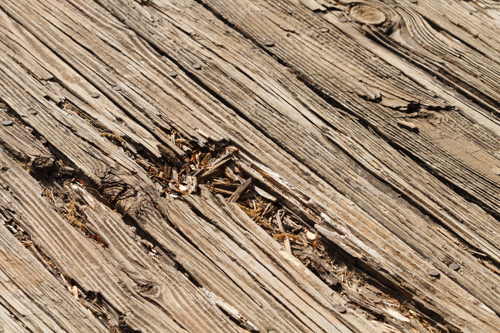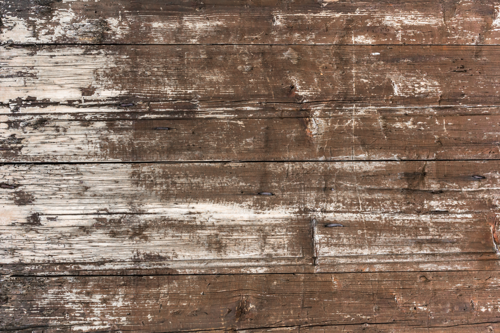
Project overview
How to Repair Rotten Wood - Video Guide
If you want a more in depth walk thorugh of how to repair rotten wood, check out this video.
How to repair rotten wood
At best, rot is an eyesore that ruins the finish of your wood. At worst, it can cause severe structural damage. If you catch it early enough, it’s a quick and easy repair, and you won’t have to replace any timber.
How to identify rotten wood
There are two different types of rot; wet rot and dry rot.
Wet rot is more common and affects very damp wood but can affect plaster, wallpaper and carpets too.
Wet rot causes the wood to soften over time, so while it might not seem like a huge issue at first, it can quickly cause problems. It’s most common around windows, in timber, in cellars and roofs.
Wood affected by wet rot can look darker than healthy timber, it can feel soft and spongy, it might be cracked or crumbly, and it could have small patches of fungus growth. It’s also likely to smell damp and musty too. A good test for wet rot is to push a screwdriver or knife into the wood, if it goes in easily then you’ve likely got rot.
Dry rot still needs moisture to take hold, but not as much as wet rot.


Dry rot is a fungus which consumes wood as it spreads so can be damaging to structural integrity. Leaks, damp or poor ventilation are often the cause of dry.
Dry rot changes appearance as it progresses. In early stages, it can look like a fine white thread, as it grows it looks more like cotton wool. When it develops its ‘fruit’, it looks more like a mushroom with an orangey tinge.
Dry rot can split and crack timber into cubes or cause it crumble or shrink. Dry rot is hard to detect in flooring because it’s often underneath the floorboards. But if you notice the floor feels bouncy, that it’s sinking away from the skirting boards or it's extra creaky, you may have dry rot.
Dry rot doesn’t only affect wood, but it can get into masonry too. As soon as you notice dry rot it’s important to contact a specialist to confirm the problem.
Whichever kind of rot you have, you’re more likely to be able to smell damp before you see the rot.

How to fix rotten wood
Whichever type of rot you have, the first thing to do is fix the source of the damp and moisture. If you don’t, any repairs you make to rotten wood could very quickly become undone.
Once you’ve repaired the source of the damp, you can focus on repairing the rot.
Because dry rot has natural spores in the air, it can be very hard to get rid of completely yourself. You need to identify the infected area, cut back the wood surrounding the area, remove all visible signs of dry rot, give the area a thorough clean, and then replace the timber.
Depending on the scale of dry rot, it’s worth consulting a specialist. This is worth doing because dry rot spreads so easily that it may have infected other areas that you’re unaware of.
Dry rot removal specialists will carry out a survey and give you a quote for removal.
In most cases, you can treat wet rot without replacing the wood.
Whether you have rotten decking or a rotten door frame, this method will help repair the rot and strengthen the wood.
Start by removing crumbling wood that easily comes away and make sure the area is dry. You’ll know if you need to replace the timber if it doesn’t stop crumbling, or significant portions come away.
To help the wood hardener penetrate deeper, drill small holes into the rotten area. It’s worth drilling holes in the area that’s slightly beyond the rotten wood to ensure the rot doesn’t spread.
Once you’ve removed the crumbling wood, use a wet rot wood hardener and apply it to the wood with a paintbrush. Don’t be afraid to lay it on thick and leave it to soak into the wood.
When the hardener is dry, the rotten wood should be healthy again. If there is any excess or residue hardener, scrub it away with a wire brush.
You can then smooth out the repair with filler, leaving you with completely repaired wood.
How to prevent rot
The best way to prevent rot is with proper ventilation.
Condensation can gather around windows and cause rot when droplets pool and sit on the wood for a long time. Regularly open windows when cooking or use a dehumidifier to help improve air circulation and reduce condensation.
Repair cracks in caulk or sealant around doors and windows as this can be one way for water to come into contact with the wood.
A lot of timber is often pre-treated so should be resistant to rot. If you’re looking for decking or fencing, check that the wood is suitable for contact with the ground as this can often be the source and cause of rot.
To help prevent decking from rotting, clear it of standing water whenever you can. With the right protection, this shouldn’t be a problem, but it’s generally good maintenance to do this.

